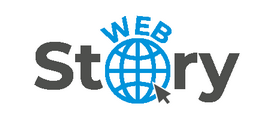Swaddling has been used for centuries to soothe and comfort newborns by providing them with a haven that mimics the uterine environment. It is thought that this delicate wrapping method, which entails swaddling a baby snuggly with a soft fabric, may encourage sound sleep, foster a sense of comfort, and even help with physical growth. A baby swaddle can be a valuable tool for parents to promote tranquillity and calm during the early stages of caring for their newborn. Parents can determine whether this age-old practice is appropriate for their children by learning about the advantages of swaddling.
Promoting Improved Sleep
Promoting longer, more restful sleep for infants is one of the main advantages of utilising a baby swaddle. Swaddling can lessen the startle reaction, which frequently wakes up babies abruptly in the middle of the night. Newborns who are securely wrapped in a swaddle feel as though they are being held softly, which might lessen their startle responses and help them sleep for longer. Swaddling also reduces a baby’s arm and leg movements, assisting them in settling into a comfortable sleep position that keeps them from waking up on their own. Using a swaddle can be a gentle yet efficient technique for parents to assist their baby’s sleep quality while they try to create good sleep habits.
Fostering a Feeling of Safety
Swaddling is frequently likened to simulating the sensation of the womb, offering neonates a familiar and cosy setting. By simulating the warmth and intimacy a newborn felt prior to birth, the gentle pressure of a baby swaddle around their body might help lower stress levels. Newborns who have this sense of security are less fussy and feel safer as they adjust to their new environment. Swaddling can also produce a calm atmosphere that facilitates comfort and strengthens the link and trust between parents and their infants. In the early stages of fatherhood, parents can rest easy knowing that swaddling can foster this sense of security.
Reducing Fussiness and Colic
Swaddling is a common method used by parents to soothe fussy infants, especially those who suffer from colic. Swaddling serves to confine the baby’s limbs by gently encircling them, preventing overstimulation and lowering the likelihood that the baby may get uneasy. When babies may feel overstimulated by outside stimuli, this enclosure can be highly beneficial. A baby that is swaddled is less likely to make abrupt movements that could aggravate them. A baby swaddle can be a reliable source of stability and comfort for infants who are sensitive to their environment, reducing some of the difficulties associated with fussiness and colic.
Encouragement of Healthy Development
As it helps newborns to sleep in a manner that aids development, swaddling may also contribute to physical health. Swaddling helps keep a baby’s arms and legs softly tucked in, which helps keep them from sleeping in awkward or dangerous postures. To promote healthy hip development, it is crucial to make sure that swaddling is done correctly, allowing for some flexibility in the legs and hips. When used properly, a baby swaddle can provide a safe, comfortable sleep environment while supporting physical development by providing a balance between security and freedom.
The Right Swaddle for Your Infant
By making sure the fabric, fit, and style of the baby swaddle suit your baby’s needs, you may maximise these advantages. Soft, breathable fabrics are best because they don’t overheat and are kind to delicate skin. While some swaddles are pre-structured for easy, rapid application, others have adjustable features that make it simpler to wrap your baby securely. Swaddling can be made much more successful if you find a swaddle that suits your baby’s tastes. Parents may give their newborn a cosy, calming atmosphere that promotes sleep, safety, and healthy development from the very beginning with the correct baby swaddle.

